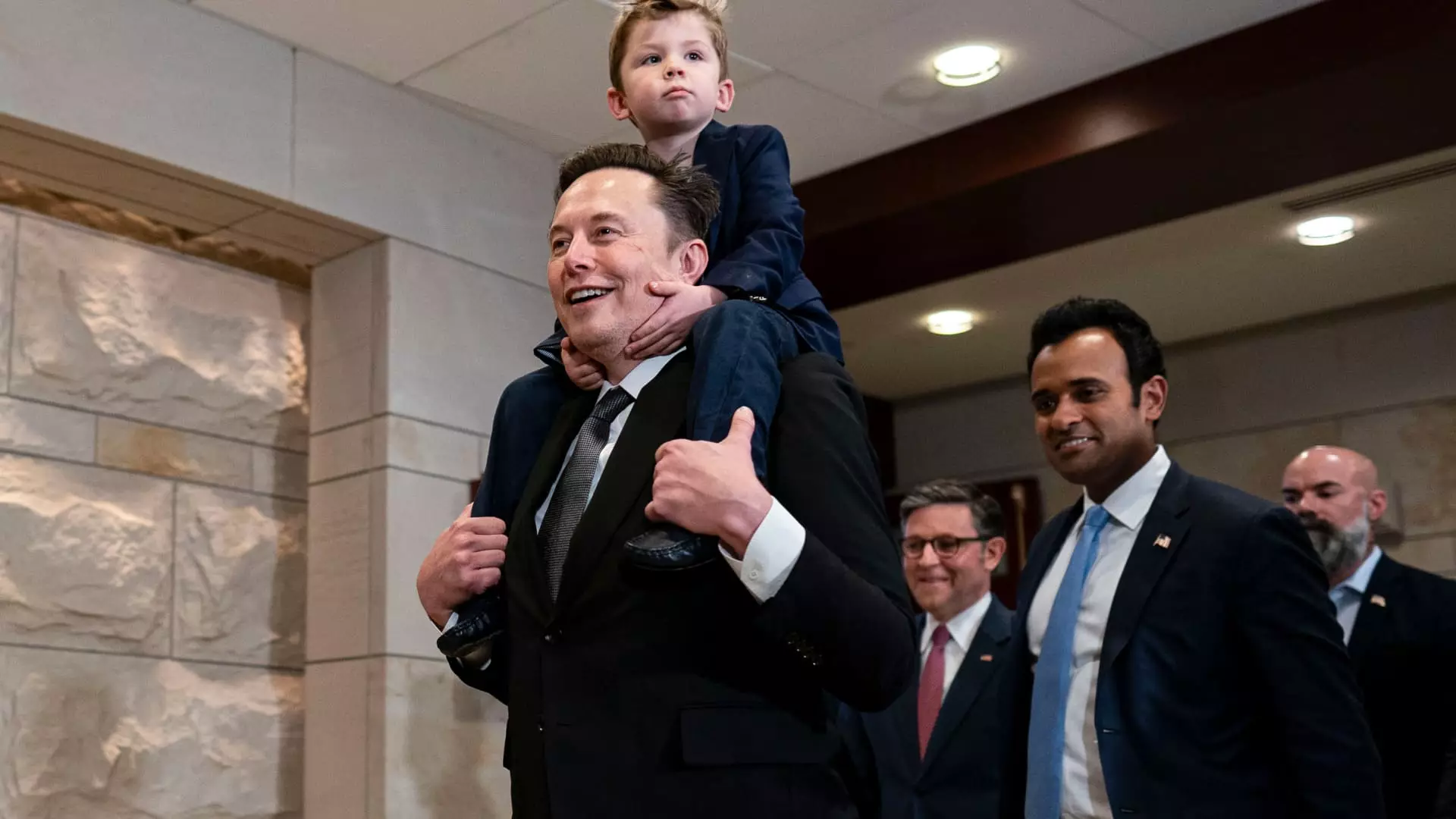The conversations surrounding remote work have ignited fierce debates among corporate leaders, policymakers, and employees. As the discourse evolves, it’s crucial to discern the underlying implications of these discussions on the labor market, particularly in light of the perspectives presented by notable figures like Elon Musk and Vivek Ramaswamy. Their recent proposals to reinforce in-office work habits suggest a nostalgic return to pre-pandemic norms; however, the broader labor market data reveals different trends. This article explores the dichotomy between ambitious political aspirations and the shifting realities of workplace dynamics.
Elon Musk and Vivek Ramaswamy, appointed to spearhead the upcoming Department of Government Efficiency under President-elect Donald Trump, recently expressed their intention to drastically reshape federal employment policies. In a Wall Street Journal op-ed, the duo characterized remote work as a “Covid-era privilege” and posited that reinstating full-time office attendance would rejuvenate workplace productivity. This call back to traditional in-person work indicates a yearning for a structure that many corporate leaders believe was more effective prior to the pandemic.
However, this pushback against remote working is puzzling when viewed against the backdrop of evolving workforce preferences and the evident productivity shifts seen during the pandemic. Many organizations are still reevaluating the balance between remote and in-office work, suggesting that Musk and Ramaswamy’s outlook may not only be antiquated but also disconnected from the current sentiment among workers.
The acceptance of remote work as a stable aspect of the modern job market is supported by data collected by WFH Research. This research indicates that even as the nation has adapted to life post-COVID, the percentage of full workdays completed remotely has stabilized between 25% and 30% since early 2021. While some high-profile companies, such as Disney and Amazon, have mandated a return to in-person work, this decision stems from a blend of cultural identity aspirations rather than clear productivity gains.
According to Nick Bloom, a Stanford economics professor, enforcing more than three days of mandatory in-office attendance does not significantly boost employee output. Employees consistently rank the flexibility to work from home as a valued benefit, and organizations that disregard these preferences risk increased turnover rates. The indirect costs associated with turnover can amount to millions for large firms, highlighting that any financial benefit gained from full-office mandates could be overshadowed by the costs of high employee attrition.
The enduring appeal of hybrid work models extends beyond employee satisfaction; they significantly benefit companies both financially and operationally. Bloom’s analysis indicates that maintaining a model where employees work from home reduces costs linked to recruitment and training. This financial incentive pushes organizations to reconsider mandatory office attendance policies as employees increasingly seek job options that offer flexibility.
Additionally, recent surveys highlight trends that contradict the notion that remote work will diminish. A healthy share of job advertisements continues to promote remote or hybrid work options. Overall, economists like Allison Shrivastava of Indeed caution against viewing the decline in remote job listings as conclusive evidence that the remote work trend has run its course.
Musk and Ramaswamy’s vision attempts to frame the return to the office as a necessary step to enhancing corporate culture, yet many return-to-office mandates face scrutiny. Companies that assert they are motivated by cultural and productivity concerns may grapple with the tension between their perceptions and the actual sentiments of a workforce that has grown accustomed to hybrid arrangements. Recent findings from ZipRecruiter suggest that some organizations might be leveraging these return-to-office policies as a guise for workforce reductions—a foreboding sign in an era of rising economic pressures.
As executives defend these return policies, assurances that such moves will enhance company culture may not resonate with workers who value the autonomy that remote work affords. For instance, Amazon’s CEO, Andy Jassy, categorically denied characterizing their five-day in-office policy as a means to orchestrate layoffs. Nevertheless, skepticism remains prevalent as employees weigh the balance between organizational loyalty and their individual work preferences.
Ultimately, the landscape for remote and hybrid work is still changing, and the tension between contrasting ideologies will persist. While Musk and Ramaswamy’s aspirations to reshape the federal workplace might symbolize a longing for stability, they overlook the complex realities of the modern workforce, where flexibility and productivity are paramount. Recognizing this truth may be vital for organizations striving to protect their bottom lines while fostering a motivated and engaged workforce. Understanding the dynamics of remote work will be critical for policymakers and corporate leaders alike, if they intend to navigate the uncertain terrain of tomorrow’s labor market effectively.

